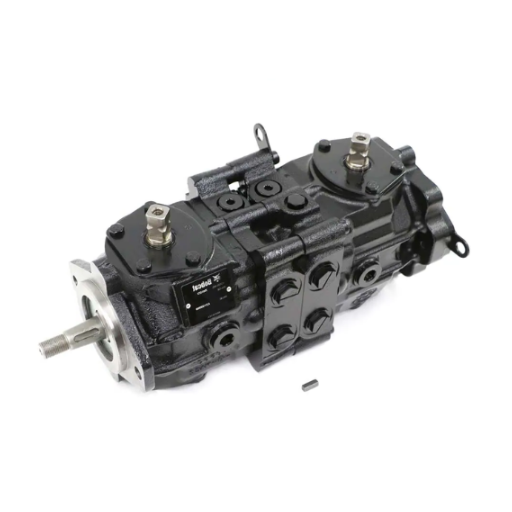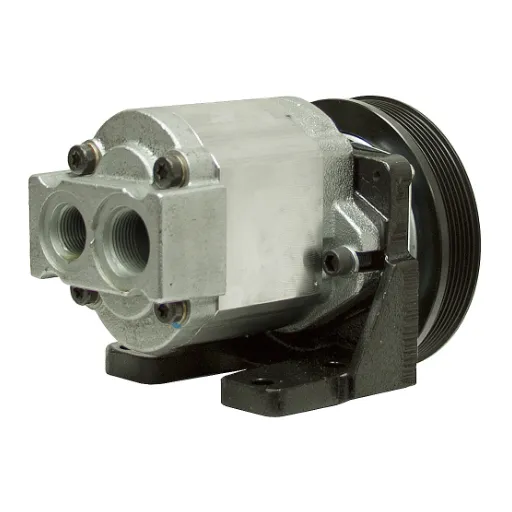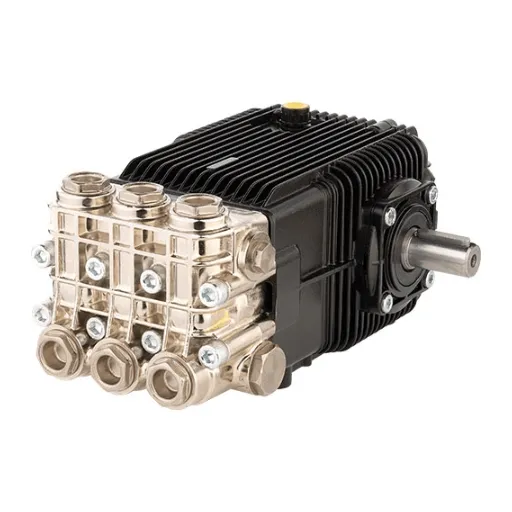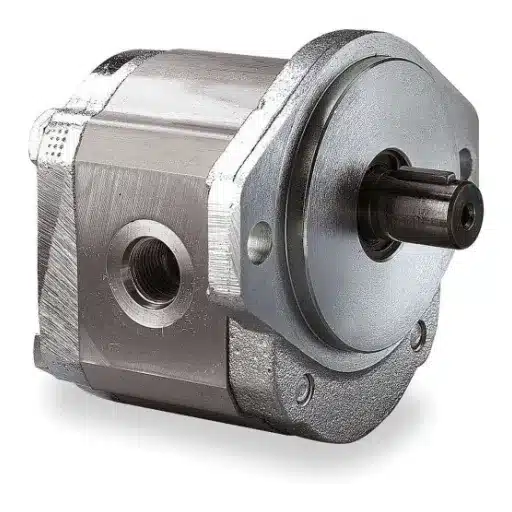Understanding Bobcat Hydraulic Pumps
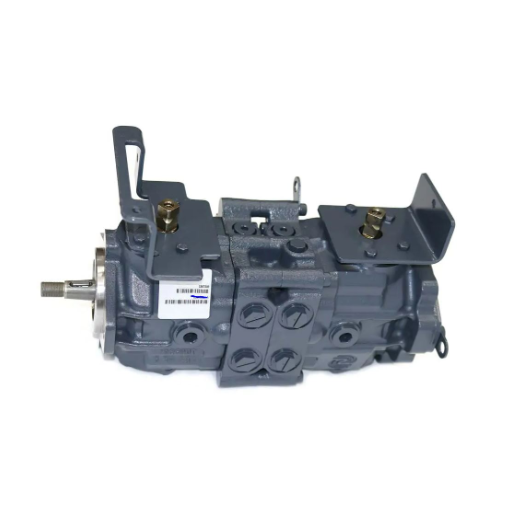
What is a Bobcat Hydraulic Pump?
A hydraulic pump in a Bobcat skid steer loader is the hydraulic system that generates the hydraulic force required to drive several functions of the machine. It converts mechanical energy from the machine’s engine into hydraulic energy used to power attachments, drive systems, and lift mechanisms. This plays a pertinent role in guaranteeing smooth movement and precise control of the skid steer.
Bobcat hydraulic pumps in the skid steer are designed to maximize efficiency, durability, and reliability in harsh working conditions. They are basically of two types: the gear pump and the piston pump. Gear pumps, being more straightforward forward, are for low-pressure operations, while piston pumps are for higher-pressure applications in more demanding loads. It therefore may also depend on the type of skid steer and its job requirement. Regardless of type, these pumps are designed to provide hydraulic pressure and flow in a continuous manner so that the machine can operate smoothly and effectively.
Regular maintenance procedures like checking fluid levels, inspecting seals, and looking for leaks would enhance the longevity of any of these pumps. Ignoring maintenance or the use of the wrong hydraulic fluid causes the system to become inefficient, heat up, or wear prematurely. Knowing the basic working principle of and maintenance operation on a Bobcat hydraulic pump ensures the best performance for the skid steer and minimizes operational costs over a longer period.
The Role of Hydraulic Pumps in Skid Steers
Hydraulic pumps function as essential entities, endowing the skid steering with the required hydraulic power to operate the various components and attachments. By interchanging mechanical energy for hydraulic energy, pumps seem to allow the skid steer to lift, dig, and power auxiliary attachments. So hydraulics draw fluid from a reservoir, pressurize it, and send the fluid to hydraulic motors and cylinders within the system.
Its effectiveness determines how well the work is done by the skid steer as a whole. A poorly operating or inefficient pump can mean loss of power, sluggish responses, or even the disabling of the whole system. To guarantee this reliability, the manufacturers design these pumps to carry high-pressure loads and give uninterrupted performance in the harshest conditions. Furthermore, the use of recommended hydraulic fluid, with the cleanliness of its filters coming foremost to mind, goes a long way to sustain the pumps and keep contamination at bay.
Proper maintenance of hydraulic pumps improves the longevity of these and further contributes to the operational efficiency of the skid steer. Some key practice areas for inspections include looking for signs of leakage, checking fluid levels, and monitoring system temperature. Results can commonly be enhanced by aligning with manufacturer-recommended service intervals as well as quickly addressing signs of wear or any damage. Follow these steps, and in turn, operators will find a seamless working environment and far fewer costly repairs.
How Bobcat Hydraulic Pumps Work
A Bobcat hydraulic pump works by converting the mechanical energy received from the engine into hydraulic power that is used to power the attachments and drive systems of the machine. The pressurized hydraulic fluid moves from one place to another within a closed system and transmits force to those components that need to move or require power. The pump creates a flow of hydraulic fluid, which is directed to motors or cylinders to perform lifting, digging, or moving operations.
Typically, the pump works together with a hydraulic reservoir, control valves, and actuators. The reservoir stores fluid, drawing it into the pump for pressurization. Control valves dictate the direction of fluid flow, telling which skid steer components should receive power. These components work harmoniously to bring about very smooth and precise machine movements, thus enabling operators to execute demanding jobs with ease.
Bobcat hydraulic pumps have been manufactured to withstand high pressures and continuous operation; however, good maintenance is necessary to get peak performance. Regular inspections for fluid contamination, excessive noise, and varying temperatures can signify whether a looming failure is in progress. If the operators keep the system leakage-tight and in the best condition, they potentially increase the pump’s lifespan and its performance. An understanding of these operational principles of the hydraulic pump puts more emphasis on maintenance and the engineering that makes these machines work.
Common Issues with Bobcat Skid Steer Hydraulic Pumps
Identifying Signs of Pump Failure
So as to keep in smooth operation and avoid costly repairs, early detection of hydraulic pump failure in Bobcat skid steer loaders is crucial. Impending failure is often accompanied by some weird noises like whining, grinding, or knocking, depending on which comes from internal components being worn out or from cavitation. Sometimes, a poor hydraulic power output, a less-than-desirable response, or even sporadic performance could very well mean bad seals, worn-out pistons, or fluid starvation. Exterior leaks around the pump housing can also be a telltale sign of a faulty seal or connection.
Warning Signs to Watch For:
- Unusual noises (whining, grinding, knocking)
- Poor hydraulic power output
- Less-than-desirable response times
- Sporadic performance
- Exterior leaks around the pump housing
- System overheating
Another sign is overheating in the hydraulic system. Higher operating temperatures can arise due to one of several factors: blockages, low fluid levels, or excess internal wear on the pump. The overheating phenomenon also diminishes the viscosity of hydraulic fluid, thereby setting a chain reaction wherein it can even damage the pump internals further. Periodic monitoring of system temperature and establishing baseline operational parameters will allow the operator to spot thermal deviations quickly.
Next up is are potential contamination of hydraulic fluid. Metallic particles, strange coloration, or an unpleasantly burnt smell from the fluid could be a great indication of internal damage or pump component degradation. Regularly analyzing fluid and inspecting the filtration system ensures any contaminants are flagged and removed in time, thereby reducing the chances of pump failure. Early recognition of these signs offers the opportunity to apply maintenance strategies and maintain skid steer performance at its peak.
Diagnosing Performance Problems
Diagnosing performance issues within a skid-steer hydraulic system typically necessitates a data-driven, systematic diagnosis. Begin with pressure measurements, which are often taken with pressure gauges installed at diagnostic ports across the system, ensuring manufacturer specifications are being met. Any deviation from the specified pressures may indicate either improper functioning, like in the case of a poor pump, a stuck relief valve, or blockages anywhere along the hydraulic circuit.
Similarly, check the flow rates using a flow meter; any drops may be due to worn pumps or blocked lines. Irregular flow rates could be attributed to internal leakage or cavitation within the pump or actuation systems. Temperature monitoring is also vital; temperatures that are too high will cause fluid degradation and component wear, meanwhile, being too cold would point to a fluid with less than optimal viscosity for the task.
Further investigation into concealed problems such as leaks, hot spots, or abnormal vibrations across hydraulic lines and components can be conducted using more sophisticated diagnostic tools, such as thermography or ultrasonic sensors. The path to resolving the performance problem with the least chance of unplanned downtime and the most efficient operation is made clear by constant cross-referencing of the diagnostic information with service manuals and recommended thresholds set by manufacturers.
Maintenance Best Practices for Bobcat Hydraulic Pumps

Daily Inspections
Visual checks for apparent leaks, loose fittings, or essential damage to the machine.
Weekly Inspections
Check fluid levels, verify proper pressure, and assess pump performance under operating conditions.
Advanced Diagnostics
Use hydraulic pressure testers and infrared sensors to detect subtle performance issues.
Comprehensive System Inspections
Every 500-1,000 operating hours, disassemble key components to check for wear on seals, bearings, and pistons.
Inspection Frequency and Techniques
When inspecting Bobcat hydraulic pumps, I recommend having an inspection carried out on a regular schedule based on operating hours and the manufacturer’s recommendations. Thus, daily inspections are more of a visual check to see if there are apparent leaks, loose fittings, or essentially damage to the machine. A more thorough weekly inspection will include touching up fluid levels, setting the right pressure, and checking the pump’s performance in operating conditions.
I recommend employing advanced diagnostic equipment like hydraulic pressure testers and infrared sensors in periodic diagnostics. These gadgets can detect subtle nuisances that mean inefficient pressure development or are precursors of overheating, going unnoticed in routine inspections. Afterwards, set the indicators against manufacturer specifications to offer consistency in performance review and aid in potential failure prediction.
Lastly, running comprehensive system inspections every 500 to 1,000 operating hours is an important practice; that means disassembling some key components to check for wear on seals, bearings, pistons, and so on. With this schedule in place, I would be able to maximize the performance and life of the hydraulic system, preventing costly repairs and avoiding unexpected downtimes.
Proper Cleaning Methods
Thorough cleaning of hydraulic systems is very crucial for their optimal performance and for keeping contaminants away that would cause operational failures. The first step in cleaning any hydraulic system should be the selection of a cleaning fluid that is compatible with the system’s operational oil so that no adverse chemical reaction or degradation of internal components occurs. For ensuring thorough cleaning, operators usually employ high-velocity flushing. This process involves a strong current of clean fluid being passed through the system; its mission is to sweep out impurities such as sludge, varnish, or even particulate debris.
An advanced filtration unit removes contaminants from the fluid during circulation, rendering the fluid superior in cleanliness to the levels specified by the ISO 4406 counts. In addition to this, manual cleaning of reservoirs and piping is sometimes carried out using lint-free wipes and soft brushes to clear off stubborn buildups. Special attention is warranted for critical sections like valves and restricted passages along which an ultrasonic cleaning technique is adopted to remove residues with cavitational action.
Another post-cleaning confirmation of cleaning efficacy comes from particle count testing and fluid analysis for residual contaminants. These procedures and contamination-level monitoring bring about enhanced reliability and improved efficiency of the hydraulic systems, reducing the long-term wear and tear as the end goal.
Extending the Life of Your Hydraulic Pump
An extended life for hydraulic pumps lies in a combination of maintenance activities, operational criteria, and advanced means of monitoring. Proper fluid management is at the heart of this practice: fluids must meet manufacturer-recommended specifications, and periodic fluid analysis must be performed to identify contamination, degradation, or levels of viscosity that are out of norm. Contamination ingress is considered to be the number one hydraulic pump failure mechanism and can be avoided through regular filter changes, ensuring seals are in place, and ensuring system connections are sealed properly.
Operating conditions are equally important. Forced overloads of the system, temperatures beyond the limits at which pumps should work, and improper lubrication are a few conditions that accelerate the wear and tear of components. Temperature monitoring should, along with efficient cooling, prevent overheating and guarantee operation at a steady temperature.
Predictive maintenance technologies further increase reliability. With these, the sensors measure pressure, temperature, and vibration to monitor the system in real time and target early diagnostics of faults that might occur. The data obtained can feed into predictive analytics to drive scheduled maintenance before failures happen, limiting downtime and reducing repair expenses.
Incorrect alignment of the pump during installation and existing mechanical wear could, if undetected, cause an imbalance and premature damage; prevention via periodic checks is therefore recommended. An integrated solution combining these preventive techniques with technological measures will reap the greatest benefits in extending hydraulic pump life and minimizing interruptions to ongoing operations.
Replacement Guidelines for Bobcat Hydraulic Pumps
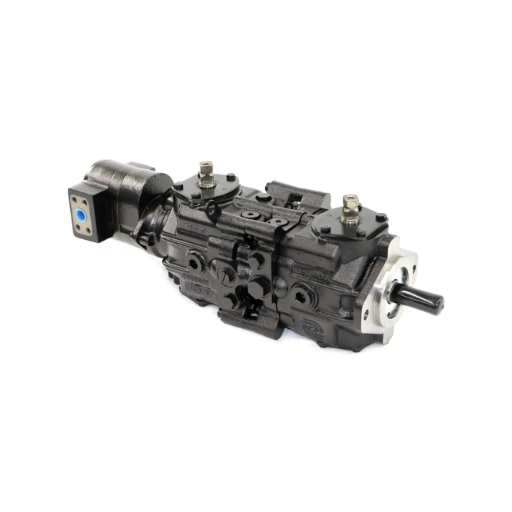
When to Replace Your Hydraulic Pump
Hydraulic pumps are changed when certain performance and physical factors unmistakably suggest wear or failure. Serious symptoms include low system pressure, weird sounds, such as whining or grinding noises, reduced capacity to perform hydraulic work, increased operating temperatures, and serious fluid leaks from the pump seals. Such indications may be an indication of internal damage or wear, warranting replacement.
| Operating Hours | Pump Type | Expected Lifespan | Replacement Indicator |
|---|---|---|---|
| 0-2,500 | Standard Gear Pump | Normal Operation | No replacement needed |
| 2,500-5,000 | Standard Gear Pump | Monitor Performance | Increased maintenance checks |
| 5,000-7,500 | Standard Gear Pump | Consider Replacement | Performance degradation |
| 7,500-10,000 | High-Performance Piston | Monitor Closely | Preventive replacement |
Normally, hydraulic pumps are replaced after a certain number of working hours, as set by industry standards and dependent on the kinds of pumps or manufacturers’ requirements. To illustrate, most Bobcat hydraulic pumps will last between 5,000 and 10,000 working hours under normal working circumstances. Moreover, a real-time monitoring system continuously monitors possible pressure, flow, and temperature changes in the system and triggers an early warning signal on potential pump failure so operators can enroll in pre-emptive replacement.
Hydraulic fluid should always be analyzed regularly for contamination and degradation as part of the maintenance procedure. High levels of contamination or continuous fluid degradation may aggravate pump wear, thus hastening the replacement of the pump. By early resolution of these problems and adherence to manufacturer replacement guidelines, highly expensive repairs as well as equipment downtime can be kept to a minimum in the interest of continuous operational efficiency.
Signs of Wear and Tear to Watch For
The monitoring of pump bearing systems should be continuously maintained for wear and tear if one accounts for maintaining overall operational effectiveness, and if one is to prevent costly system failures. Some wear causes increased noise levels during operation. An abnormal noise, such as grinding, knocking, or excessive vibration, might well underscore internal damage of the components, mainly the bearings or impellers. Such noises are caused by misalignments, loose parts, or very worn-out conditions of the mechanism. Recognition of such sound warnings at an early phase can reduce the hazard of massive breakdowns.
Another strong sign of wear is reduced performance hydraulically; it usually appears in either lower flow rates or pressure delivery. Performance degradation may come about because of increased leakages within, caused by worn seals, scoring on important surfaces, or excessive clearances between moving pieces. Another alert signal is the presence of abnormally high temperatures in the operating system. It could be an indication of excessive friction due to wear of a component, heat generation due to fluid degradation, or poor lubrication, thereby needing immediate corrective action to forestall failure.
Visual inspection of bearing systems also reveals early indicators of wear. Visible leaks around seals or fittings, unusual wear patterns on surfaces, or damaged hoses and connectors are all indications requiring urgent attention. Furthermore, irregularities in fluid color or a marked increase in contamination levels during regular analysis may indicate internal deterioration. Making the right diagnosis and timely intervention whenever such signs appear are paramount as these enable preventive maintenance toward keeping the pump system life longer and more reliable.
Choosing the Right Hydraulic Pump for Your Bobcat

Key Specifications to Consider
When choosing a hydraulic pump for your Bobcat machine, several factors need to be ascertained to ensure its performance and compatibility. Mainly, one should consider the flow rate, usually measured in gallons per minute (GPM). This is how much volume of hydraulic fluid the pump can supply, thereby influencing the speed and efficiency of hydraulic actions. Also instrumental is the maximum pressure (PSI) it can operate with; this is the force generated by the pump in operating attachments and systems.
The displacement of the pump may be another factor, fixed or variable. A pump of fixed displacement means that it has a constant flow rate and is suitable for the simpler systems, whereas a pump of variable displacement has an adjustable flow rate, so it offers better energy efficiency and system control. Also, it is paramount that you ensure a good fit with your Bobcat model’s existing hydraulic lines, fittings, and reservoir capacities to avoid any operational issues.
With respect to hydraulic fluid type and temperature range to be supported by the pump, your pump choice should agree with the environmental conditions under which you operate. It should also be able to accept high-quality hydraulic oils, with materials fashioned sufficiently tough to withstand temperature and load variations. These specifications, along with the latest performance data, help assure that the hydraulic pump you pick will maintain peak productivity and reliability for your Bobcat equipment.
Factors for Ensuring Compatibility and Durability
In ensuring utmost compatibility and durability for a hydraulic pump, one has to study the elements of material construction, pressure ratings, and operating efficiency under varying workloads. The pump components should be made from high-quality alloys or composites that exhibit resistance against wear, corrosion, and fatigue associated with prolonged use. It is equally important to verify if the operating pressure and flow meet the capacity range of your equipment to maintain system integrity and rule out early failure.
The pump materials should remain thermally stable for long-term durability. That is, indisputably, a pump should be chosen that will not undergo any change in operation over a wide range of temperatures. Use of state-of-the-art sealing systems and lofty viscosity index hydraulic oils will ensure a longer system life without too much friction or thermal degradation. Following maintenance routines and checking for performance levels will greatly help diminish pump wear and lengthen pump life.
Having the latest design upgrades and practical insight at the forefront, especially with the latest advances in energy efficiency and noise reduction, will make your system perform better. Keeping abreast of all technological advancements will allow your hydraulic machines to sustain performance under strict industrial standards.
Evaluating Performance for Your Needs
Performance assessment in hydraulic systems needs a proper understanding of the parameters involved and the requirements of the practical applications. Start by identifying performance indicators (KPIs) needed in your system: flow rate, pressure levels, energy efficiency, and noise emission. These indicators should correspond with the operating requirements of your system as well as the environment within which it functions.
Testing usually has to be precise to evaluate the performance of the system under conditions approximating load scenarios. Data may be gathered through using diagnostic equipment like flow meters, pressure gauges, and thermal imagers to reveal efficiencies and inefficiencies. Data from these observations can be complemented with computational tools or predictive software to enhance the accuracy of the conclusions and to pinpoint exactly where the bottlenecks are.
Therefore, staying up to date with the most recent innovations and developments through data sources guarantees benefiting from breakthroughs, such as adaptive control or materials developed for better effectiveness. A scientific approach toward data collection and interpretation proves best when evaluating the abilities of your equipment in comparison to industry standards or during the implementation stages of any system upgrade intended to further enhance productivity and life culture.



